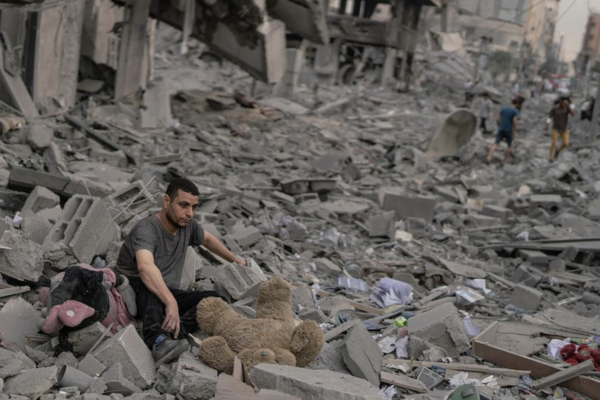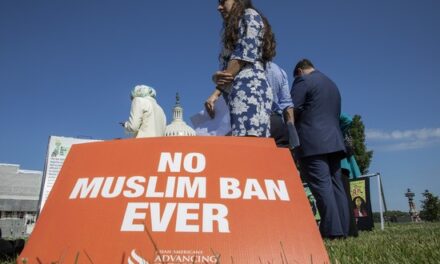The Israeli military’s relentless onslaught upon Gaza has plunged the region into a distressing abyss of civilian casualties, an egregious violation of international conventions. The lamentable toll is comprised of the elderly, mothers, children, youth, students, and individuals with disabilities, transforming Gaza into a harrowing landscape of lifeless bodies.
Since the establishment of the state in 1948, Israel has engaged in recurrent and merciless acts of human carnage within Palestine. This unceasing cycle of brutal violence is made possible by Israel’s formidable military prowess, fortified by unwavering support from the United States since 1946.
The utilization of its veto power by the United States on no fewer than 34 occasions within the UN Security Council, obstructing resolutions critical of Israel, unequivocally underscores the intricate role played by the United States in the perpetual tragedy befalling the Palestinian people.
Israel, devoid of superpower status, exists as a reliant entity whose sustenance hinges inexorably upon American aid; its survival remains contingent upon this support. Engaged in the lethal orchestration of land seizures and the brutal subjugation of a populace, Israel persists through the aid of foreign weaponry, contrasting starkly with the enduring resilience displayed by Palestinians from the Nakba of 1948 to the First Intifada spanning 1987-1993, the Second Intifada from 2000-2005, and the Jerusalem Intifada between 2014-2016, events that reverberated through both Israel and the United States. The undeniable truth persists that moral fortitude, inherent within the Palestinian struggle, stands impervious to all attempts at suppression.
The symbiotic relationship between the United States and Israel is epitomized by the extensive support provided to the Israel Defence Forces, where approximately 40 percent of its budget, alongside the entirety of the defence budget, is contingent upon U.S. aid.
In Charles Freilick’s penetrating analysis titled ‘Can Israel Survive Without America?’ – a piece illuminating Israel’s reliance on the United States – the portrayal emerges of Israel as a subservient entity dutifully adhering to American directives in exchange for indispensable aid.
The colossal figures delineating U.S. aid to Israel for military modernization, economic restructuring, and missile defence, spanning the period from 1946 to 2023, stand as a testament to this alliance. A staggering $104.506 billion allocated for military assistance, accompanied by an additional $34.348 billion for economic aid, and an earmarked $7.411 billion specifically directed towards missile defense during this time frame underscore the substantial investment made by the United States.
Furthermore, the recent surge in missile defence funding in 2022 further cements this unwavering support. The cumulative aid sum of approximately $260 billion over the span of 1946 to 2023 underscores Israel’s role as a key custodian of American interests within the region, a narrative distinct from any direct missile funding provided by the Department of Defence.
WAR TACTICS OF AMERICA
The United States has dedicated considerable resources and effort to elevate Israel’s armed forces into the vanguard of global military prowess. It is an accurate assessment to regard Israel as the linchpin within the intricate mechanism of the American war apparatus.
Leveraging substantial aid from the U.S., Israel has meticulously cultivated its own defence industry, establishing itself as a paramount contender in the sphere of global arms trade.
Prominent Israeli defence entities like Israel Aerospace Industries (IAI), Rafale, and Elbit Systems stand as influential purveyors of warfare, exporting a remarkable 70 percent of their products largely due to American assistance. These companies specialize in the exportation of cutting-edge technologies encompassing missile defense systems, unmanned aerial vehicles, cyber-espionage apparatus, radar, and electronic communication systems to a diverse array of non-state entities. Notably, Israel’s primary export destinations encompass nations such as India, Azerbaijan, and Vietnam.
An article featured in Al Monitor, penned by Reena Basit, sheds light on India’s acquisition of the ‘Falcon air surveillance system’ from Israel, marking India’s ascent as the foremost market for Israeli defense equipment. This attests to Israel’s burgeoning influence in the global defense market, propelled significantly by the support extended from the United States.
RUSSIAPHOBIA MADE IN AMERICA
Israel’s apprehension regarding Russia’s involvement is evident in its reluctance to extend direct military aid or equipment to Ukraine, despite President Zelenskiy’s urgent plea for support amid concerns of an impending threat.
Addressing this stance, Prime Minister Netanyahu, in an interview with CNN, underscored his commitment to averting any potential Russian-Israeli military discord, emphasizing a mutual aversion to such a scenario. Emphasizing a conscientious approach, Netanyahu articulated, “I have no desire to instigate a Russian-Israeli military confrontation, and neither does anyone else harbour such aspirations.”
Simultaneously, Israel has demonstrated its solidarity through extensive humanitarian aid provided to Ukraine, despite its geographic constraints as a diminutive nation. Netanyahu highlighted Israel’s reception of a disproportional influx of Jewish and non-Jewish refugees, emphasizing the multifaceted assistance extended to those in need.
However, while ostensibly rooted in humanitarian concerns, this stance alludes to a perceptible duality and apprehension over potential repercussions. The evident fear of Russia potentially acquiring Israeli weaponry pervades this reluctance, simultaneously explaining the frustration stemming from the inability to engage in arms sales to Ukraine, thus highlighting the complex geopolitical dynamics at play.
A notable change emerged was that permission was granted for two Israeli companies to vend electronic warning systems, encompassing a 40-kilometer range, to Ukraine, albeit restricted solely for civilian purposes. This allowance aims to assess the efficacy of these systems in thwarting Iranian drone attacks, which Russia has purportedly deployed against Ukraine in recent times.
The exponential proliferation of Israeli surveillance technology for export has become pervasive. In 2021, multiple American media outlets disclosed that the NSO Group, an Israeli-owned cybersecurity company, had distributed Pegasus, a spyware tool, to numerous foreign governments. These governments, in turn, employed this software to surveil and target human rights activists. The monetary obligations associated with its sale are minimal.
Those identifying Hamas as a terrorist entity should acknowledge that Israeli enterprises have recently engaged in, and potentially continue to engage in, the sale of such technology to various terrorist organizations globally.
The evident complacency and limited commitment exhibited by the United States stem from a strategic imperative to maintain Israel’s status as a ‘rogue state.’ The precise nature of armament and equipment provided to Israel by the United States remains veiled in secrecy, disclosed only partially in the aftermath of the Hamas’ attack on October 7. The unveiled arsenal consists of ‘precision-guided munitions, small-diameter bombs, artillery, ammunition, Iron Dome interceptors, and other pivotal equipment.’ This selective disclosure underscores America’s implicit involvement in the ongoing turmoil in Gaza.
Israel’s ascendancy in the conflicts of 1948 and 1967 can be attributed to the unobstructed influx of American armaments, bolstering its military and economic preparedness. Consequently, the aftermath of these conflicts has left nearly a million Palestinian refugees and their progeny in a state of statelessness, scattered across Jordan, Lebanon, and Syria.
As per the UN General Assembly’s 1948 resolution, the provision for the return of Palestinians to Palestine stands unequivocally, yet Israel’s insistence on excluding descendants of survivors from refugee status poses a substantial impediment to this prospect.
Analysts exhibit minimal concern over the fundamental human rights of hundreds of thousands of Palestinians aspiring to return to a Palestinian state, a key facet of the envisioned two-state solution.
Remarkably, even during the overflow of support from international communities towards Palestine, a right-wing Zionist sentiment is emerging, rationalizing abhorrent acts such as the targeted killing of newborn infants in incubators. Analyses overlooking Zionism as the edge of an enduring thirst for bloodshed, extending beyond Palestine to the global arena, obfuscate the comprehensive historical backdrop of this conflict.














